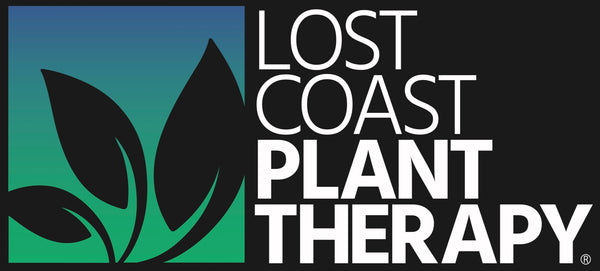
FUNGICIDES IN USE IN NEW ZEALAND
There is a better way.
Lost Coast Plant Therapy, formulated from food-grade organic ingredients, offers an efficient single-spray solution. It incorporates soy and peppermint oil, along with alcohol, to effectively desiccate fungal spores.
.
We rely on a number of fungicides to protect our precious plants.
While they all have uses none is free of human health or environmental risk.
TRIAZOLES.
The work horse of fungicides (Tebuconazole and Propiconazole)
Triazoles inhibit sterol biosynthesis, crucial for fungal cell membranes.
They have several advantages.
1. Systemic protection, they penetrate plant tissue for longer lasting effects but this leads to residue in food products.
2. They provide both curative and preventive functions.
3. They have broad spectrum of activity and are effective against powdery mildew and rust.
4. They degrade faster than copper.
On the yin and yang principle they also have some major drawbacks.
Fungal resistance may develop.
Human Toxicity
- Endocrine Disruption: Some triazoles, like tebuconazole and propiconazole, have been linked to potential endocrine effects, interfering with hormone regulation.
- Liver and Developmental Toxicity: Studies indicate that certain triazoles may cause liver toxicity and developmental effects in animals, raising concerns about long-term exposure.
- Neurological Effects: Some metabolites of triazole fungicides, such as triazole alanine and triazole acetic acid, have been studied for their potential neurological impacts, though toxicity levels vary.
Environmental Toxicity
- Aquatic Toxicity: Triazoles can persist in water systems, affecting fish and aquatic organisms by disrupting sterol synthesis.
- Soil Persistence: Some triazole metabolites remain in soil for extended periods, potentially impacting microbial communities and plant health.
- Bioaccumulation: While triazoles generally do not bioaccumulate significantly, their breakdown products can persist in ecosystems.
STROBILURINS. (Azoxystrobin and Pyraclostrobin)
These inhibit fungal respiration.
They have several advantages.
1. Strong preventative control.
2. They may enhance crop vigor and stress tolerance.
3. The exhibit broad spectrum control.
Human Toxicity
- Respiratory and Skin Irritation: Exposure to strobilurins can cause mild irritation to the skin and respiratory system, particularly for agricultural workers handling the chemicals.
- Endocrine Disruption: Some studies suggest that strobilurins may interfere with hormonal regulation, though more research is needed to confirm long-term effects.
- Neurotoxicity: Pyraclostrobin has been studied for potential neurological effects, including oxidative stress and impacts on cellular function.
- Carcinogenic Potential: While strobilurins are generally considered low-risk for carcinogenicity, some metabolites may have toxic properties that warrant further investigation.
Environmental Toxicity
- Aquatic Toxicity: Strobilurins are highly toxic to fish and aquatic organisms, disrupting mitochondrial function and leading to oxidative stress.
- Persistence in Soil and Water: These fungicides can remain in soil and water systems for extended periods, affecting microbial communities and potentially leading to bioaccumulation.
- Impact on Non-Target Organisms: Strobilurins can affect beneficial fungi and insects, altering ecosystem balance.
DITHIOCARBAMATES (Mancozeb and Thiram)
They have several advantages.
1. They are broad spectrum.
2. Multisite action makes resistance unlikely.
3. Short environmental persistence.
Human Toxicity
- Thyroid Disruption: Dithiocarbamates can metabolize into ethylenethiourea (ETU), which has been linked to thyroid toxicity and potential endocrine disruption.
- Carcinogenic Potential: ETU has been studied for its mutagenic and immunotoxic effects in animals, raising concerns about long-term exposure.
- Neurological Effects: Some dithiocarbamates may cause oxidative stress and neurotoxicity, though specific impacts vary by compound.
- Skin and Respiratory Irritation: Direct exposure can lead to skin irritation and respiratory issues, particularly for agricultural workers handling these fungicides.
Environmental Toxicity
- Aquatic Toxicity: Dithiocarbamates can be highly toxic to fish and aquatic organisms, disrupting metabolic processes.
- Soil Persistence: Some breakdown products, such as carbon disulfide (CS2), can accumulate in soil and affect microbial communities.
- Bioaccumulation Risks: While dithiocarbamates degrade relatively quickly, their metabolites can persist and impact ecosystems.
COPPER BASED FUNGICIDES (Copper Oxychloride and Copper Sulfate)
They have several advantages.
1. These control both fungal and bacterial disease.
2. Low resistance potential.
3. Approved for organic gardening.
Human Toxicity
- Skin and Respiratory Irritation: Direct exposure to copper sprays can cause skin irritation and respiratory issues, particularly for agricultural workers handling the chemicals.
- Gastrointestinal Effects: Ingesting excessive copper residues can lead to nausea, vomiting, and abdominal pain.
- Liver and Kidney Toxicity: Chronic exposure to high levels of copper can affect liver and kidney function.
- Neurological Effects: Some studies suggest that prolonged exposure to copper compounds may contribute to oxidative stress and neurological disorders.
Environmental Toxicity
- Aquatic Toxicity: Copper sprays are highly toxic to fish and aquatic organisms, disrupting metabolic processes and leading to bioaccumulation.
- Soil Accumulation: Unlike synthetic fungicides that degrade over time, copper can persist in soil, potentially affecting microbial communities and plant health.
- Impact on Beneficial Organisms: Excessive copper use can harm beneficial fungi and insects, altering ecosystem balance.

